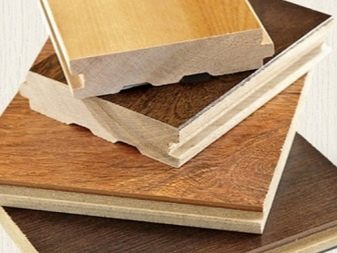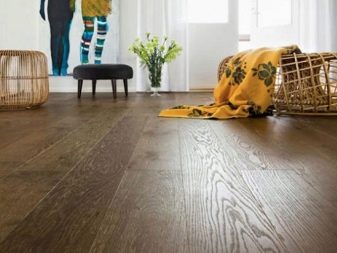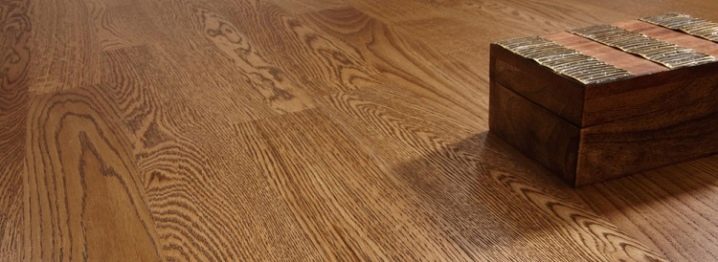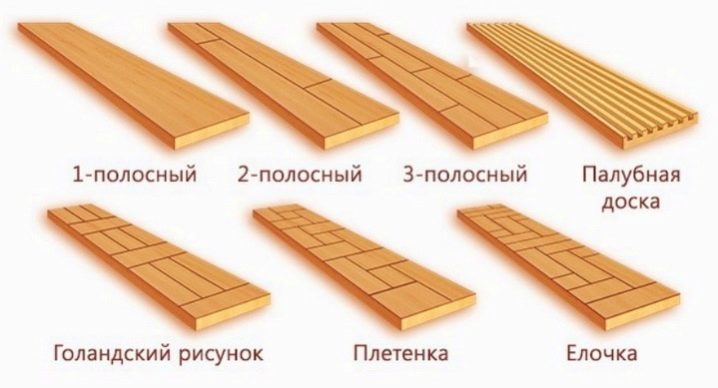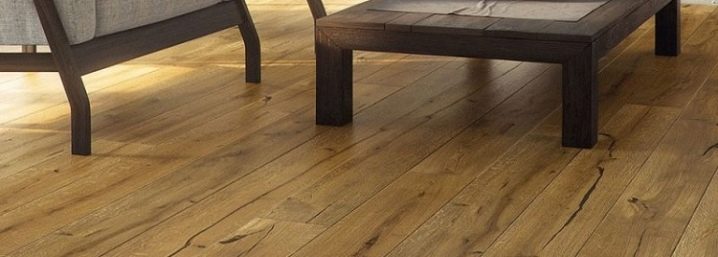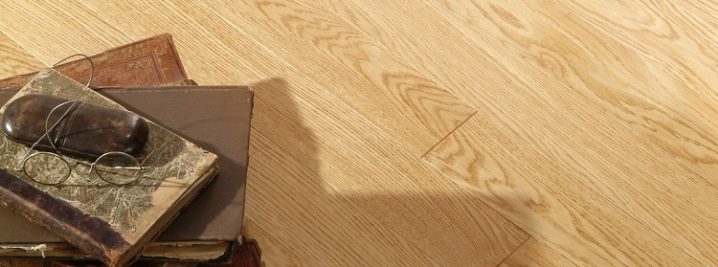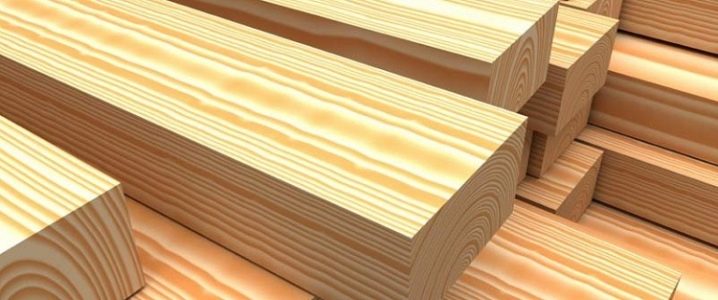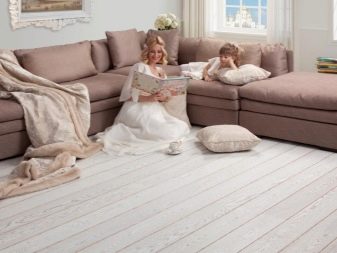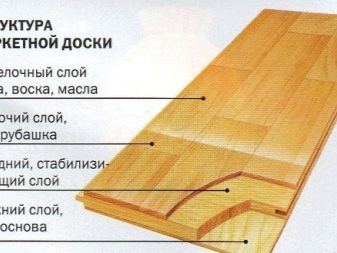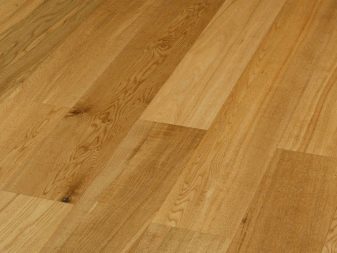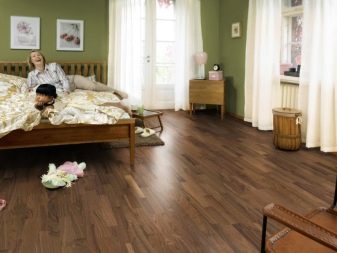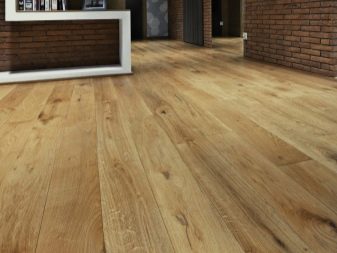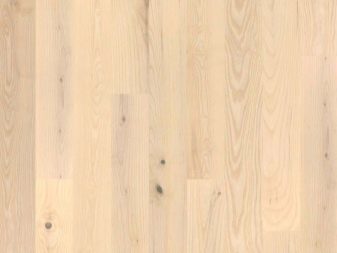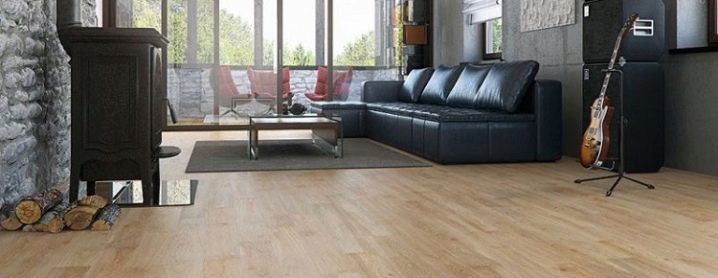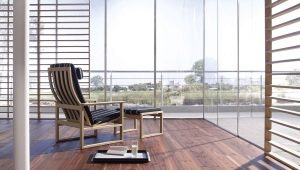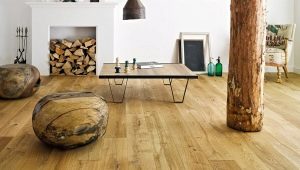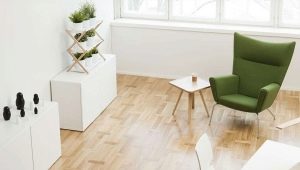Advantages and disadvantages of a single plank floorboard
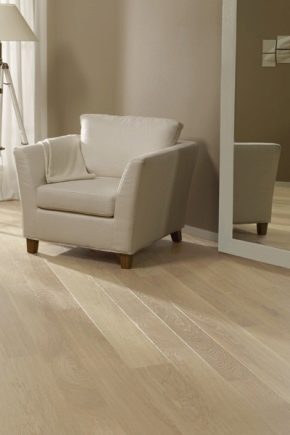
When purchasing flooring, buyers first evaluate its appearance. But, besides, how your floor will look externally, you need to think about the quality of the product, find out what it consists of, what tree is used, pay attention to environmental safety, practicality and cost.
What is a floorboard
The parquet board is a flooring from several layers. For the outer layer is applied veneer valuable wood, which is coated with varnish or oil. The inner layer is made of cheap wood.This layer is placed perpendicular to the top and is equipped with special locks for fastening the boards to each other. It provides protection from the negative effects of temperature and humidity fluctuations. The bottom layer must provide the necessary stiffness to prevent sagging.
Types of floorboards
Before choosing parquet flooring, you need to know the difference between different types. Parquet can be different:
- Single sideband. The upper decorative layer consists of a single canvas, the wood pattern looks clear and pleasing to the eye.
- Two way. The top layer consists of two lamellae, which are flush with each other.
- Three-way. The outer layer consists of three lamellae offset in length. The difference of the three-strip board is in the presence of a pattern in the form of a wicker or fir-tree.
- Four-way. It is made the same as the previous one, only includes four slats.
Features of single-sided parquet flooring
This floor material is characterized by the presence of angular chamfers, imitating the seam between the floorboards. This feature makes it possible to use the deck method of laying during the work.Such material should be used for laying preferably in spacious rooms, in small rooms it will not look good. Floorboards are usually 180-200 mm wide, although you can find options that are much narrower.
The floor of this material is similar to a monolithic structure.
Benefits
Single-sided parquet material looks like a massive board, since its outer fabric is not divided into separate segments. It has the following advantages:
- Good wear resistance;
- Outwardly it looks attractive;
- Ease of installation;
- Relatively low price (compared to an array board).
disadvantages
Despite the abundance of advantages, single-sided flooring has disadvantages:
- Single-sided parquet material is much more expensive than two-way or three-way;
- It is possible to lay such a product only on a very flat base and with the help of an adhesive;
- Subject to reaction to temperature and humidity changes;
- Easily deformed.
Wood for manufacturing
For the production of suitable such varieties of wood, which have good wear resistance and durability:
- Oak. It has the greatest popularity, as it has strong and durable wood.Products made from this tree are of high quality, as it does not rot, is not exposed to fungus, does not change shape, does not crack and looks beautiful;
- Beech. Products from it have a light shade, are steady against moisture and are strong;
- American walnut. The coating of it is durable and long lasting; it is notable for the amazing beauty of the dark brown wood pattern.
Sizes of products
Boards are available in various lengths from half a meter to three meters. The width of the boards can be from 6 to 45 centimeters (mostly 10-20 cm). The thickness of the web is usually 15-22 mm. The greater the thickness, the more reliable and durable the coating will be. The parquet board has 3 layers forming the final thickness:
- The bottom layer consists of softwood veneer, its thickness is about 2 mm;
- The central layer, the largest in thickness, consists of several layers of thin coniferous veneer joined by glue;
- The top layer is a decorative layer of the most valuable tree species.
Sort Differences
Depending on the type of cutting, sorting can be of different types:
- Natur. In the coating there are knots up to 4 mm in diameter, the color of the products is richer, the pattern is heterogeneous and “alive”,the cost is relatively low;
- Select The texture of this coating is homogeneous, the board has a high price;
- Country or Rustic. Material may have small knots, spots and defects. The cost is low, most often used in country houses;
- Econom or robust. The most inexpensive material in which various defects are allowed.
How to choose?
Buying flooring only on external data is not quite the right way, especially if you are buying dark tones. Such coverage looks, of course, spectacular, but caring for them is difficult. If such parquet covered with varnish is scratched, then very noticeable light stripes are formed. If you certainly want to have a dark coating, then choose one which is covered with matte varnish or oil.
Scratches on a surface with a two-color contrasting pattern will be invisible - brushed board will hide such defects. On the canvas, which has different color tones, separate flaws and dust are not very noticeable. It will be more practical to varnish the light board, and with oil or wax - a dark one.
The color of the floorboard is difficult to choose from the photo, so you need to go to the store to make the right choice.It is better if you do it in the daytime to determine the color in natural light.
When buying, you need to know that in one batch of flooring material there may be different shades, this is especially noticeable in mahogany. If you want to smooth out these differences, it will be possible to produce a tint.
When choosing material for parquet consider its thickness. If you take a sheet with a thickness of 7 mm, then if you break it, scouring will not work, since the topcoat is made of thin veneer. Material with a thickness of 10 mm will require careful handling, as it is easily susceptible to damage. It is preferable if you choose a material with a thickness of 13-15 mm, which is the most reliable. The decorative layer of this board is 4 mm. In homes where the floor is arranged on logs or in apartments with a black floor in the form of a concrete screed, it is preferable to use a thick floorboard of 20-25 mm.
The acquisition of single-sided floorboard will allow you to get a high-quality floor covering that combines the beauty and dignity of natural wood and the achievements of the latest technologies.
On how to properly lay the floorboard, see the following video.
